Premium Only Content
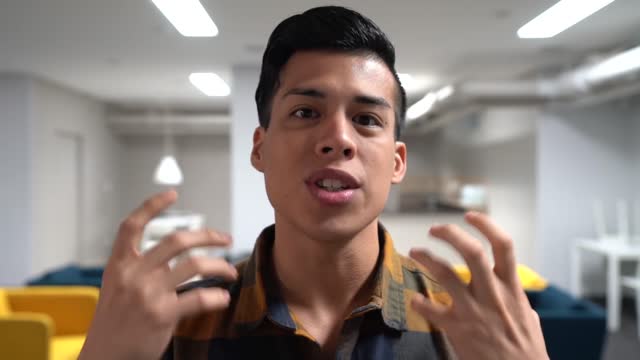
How To Beatbox Basics in just 1 Minute
Beatboxing (also beat boxing or boxing) is a form of vocal percussion primarily involving the art of mimicking drum machines (typically a TR-808), using one's mouth, lips, tongue, and voice.[1] It may also involve vocal imitation of turntablism, and other musical instruments. Beatboxing today is connected with hip-hop culture, often referred to as "the fifth element" of hip-hop, although it is not limited to hip-hop music.[2][3] The term "beatboxing" is sometimes used to refer to vocal percussion in general.
Contents
1 History
1.1 Origins
1.2 Contribution to hip-hop
1.3 Modern beatboxing
2 Notation
3 Phonology
4 Multi-vocalism
5 World records
6 Selected discography
6.1 1980s
6.2 1990s
6.3 2000s
6.4 2010s
7 In popular culture
8 See also
9 References
10 External links
History
Origins
Techniques similar to beatboxing have been present in many American musical genres since the 19th century, such as early rural music, both black and white, religious songs, blues, ragtime, vaudeville, and hokum. Examples include the Appalachian technique of eefing and the blues song Bye bye bird by Sonny Boy Williamson II.
Additional influences may perhaps include forms of African traditional music, in which performers utilize their bodies (e.g., by clapping or stomping) as percussion instruments and produce sounds with their mouths by breathing loudly in and out, a technique used in beatboxing today.[4][5]
Vocal percussion [is], "the imitation or approximation of percussion instruments," and beatboxing is a form of vocal percussion but can be described as, "music with your mouth... beatboxing is making and being the music, not just rhythm." ...Beatboxing is both the rhythm — predominantely through the bass and snare drums as well as hi-hat — while also incorporating various sound effects such as DJ scratching, synthesizers, and bass lines. Using the mouth, lips, tongue, and voice to make music is thus the beatboxer's equivalent to a pianist's fingers and arms.[6]
Many well-known performers used vocal percussion occasionally, even though this was not directly connected to the cultural tradition that came to be known as beatboxing. Paul McCartney's "That Would Be Something" (1969) includes vocal percussion. Pink Floyd's "Pow R. Toc H." (1967) also includes vocal percussion performed by the group's lead vocalist, Syd Barrett. Jazz singers Bobby McFerrin and Al Jarreau were very well known for their vocal styles and techniques, which have had great impact on techniques beatboxers use today. Michael Jackson was known to record himself beatboxing on a dictation tape recorder as a demo and scratch recording to compose several of his songs, including "Billie Jean", "The Girl Is Mine", and others.[7] Gert Fröbe, a German actor most widely known for playing Auric Goldfinger in the James Bond film Goldfinger, "beatboxes" as Colonel Manfred von Holstein (simultaneously vocalizing horned and percussive instruments) in Those Magnificent Men in their Flying Machines, a 1965 British comedy film.
Contribution to hip-hop
The term "beatboxing" is derived from the mimicry of early drum machines, then known as beatboxes, particularly the Roland TR-808.[1] The term "beatbox" was used to refer to earlier Roland drum machines such as the TR-55 and CR-78 in the 1970s.[8] They were followed by the TR-808, released in 1980, which became central to hip hop music[8] and electronic dance music.[1] It is the TR-808 that human beatboxing is largely modeled after.[1]
"Human beatboxing" in hip-hop originated in the 1980s. Its early pioneers include Doug E. Fresh, the self-proclaimed first "human beatbox" (and arguably its most famous practitioner);[9] Swifty, the first to implement the inhale sound technique[citation needed]; Buffy, who helped perfect many beatboxing techniques;[10] and Wise, who contributed significantly to beat boxing's proliferation.[citation needed] Wise inspired an entire new fan base of human beatboxers with his human turntable technique. Other pioneers of beatboxing include Rahzel well known for his realistic robotic sounds and for his ability to sing and beatbox simultaneously, Scratch a beatboxer and musician well known for further revolutionizing the use of vocal scratching in beatboxing, and Kenny Muhammad The Human Orchestra, a beatboxer known for his technicality and outstanding rhythmic precision, who pioneered the inward k snare, a beatbox technique that imitates a snare drum by breathing inward.
Modern beatboxing
Menu
0:00
An example of modern beatboxing
Biz Markie beatboxing
The Internet has played a large part in the popularity of modern beatboxing. Alex Tew (aka A-Plus) started the first online community of beatboxers in 2000 under the banner of HUMANBEATBOX.COM. An early example of modern beatboxing was seen in the 2001 South Korean romantic comedy film My Sassy Girl. In 2001, Gavin Tyte, a member of this community created the world's first tutorials and video tutorials on beatboxing. In 2003, the community held the world's first Human Beatbox Convention in London featuring beatbox artists from all over the world.
Beatboxing's current popularity is due in part to releases from artists such as Rahzel, RoxorLoops, Reeps One and Alem. In the Pacific, American beatboxer of Hawaii Chinese descent Jason Tom co-founded the Human Beatbox Academy to perpetuate the art of beatboxing through outreach performances, speaking engagements and workshops in Honolulu, the westernmost and southernmost major U.S. city of the 50th U.S. state of Hawaii.[11][12][13][14][15][16][17]
Sometimes, modern beatboxers will use their hand or another part of their body to extend the spectrum of sound effects and rhythm. Some have developed a technique that involves blowing and sucking air around their fingers to produce a very realistic record scratching noise, which is commonly known as the "crab scratch." Another hand technique includes the "throat tap," which involves beatboxers tapping their fingers against their throats as they throat sing or hum. Beat boxers these days can produce up to 8 different sounds at the same time.[citation needed]
Today there is an increase in the variety in which we see beatboxing throughout musical culture. People have gone as far as adding beatboxing in with different instruments to create a completely different sound unlike any other. Artist Greg Patillo goes as far as adding in beatboxing while playing the flute to very iconic songs. Beatbox has become modernized and has even been seen in popular movies such as Pitch Perfect and Pitch Perfect 2. These movies showcase classical songs performed with a cappella covers in which all of the beats to the songs are done completely using the idea and technique of beatboxing to complete the sound capable to imitate the original song.
Notation
As with other musical disciplines, some form of musical notation or transcription may sometimes be useful in order to describe beatbox patterns or performances. Sometimes this takes the form of ad hoc phonetic approximations, but is occasionally more formal. [b] is usually the bass drum, [k] is usually the snare drum, and /ts/ ([t͡s]) is usually the hi-hat (in 4
4: 𝄆b-ts-k-ts-b-ts-k-ts𝄇).
Standard Beatbox Notation (SBN) was created by Mark Splinter and Gavin Tyte[18] of Humanbeatbox.com in 2006[19] as an alternative to International Phonetic Alphabet (IPA) transcription, which had been used sparingly before then.
In a research study published in 2013 and based on real-time MRI imaging of a beatboxer, the authors propose a notation system which combines the International Phonetic Alphabet with musical staff notation, in part motivated by their observation that many beatboxing sounds can be adequately represented by the IPA.[20]
Phonology
Each beatboxer can produce a very large number of unique sounds, but there are three distinct linguistic categories of sound within beatboxing. Ejectives are the strong puffs of air from the voicebox that give intensity to percussive sounds. The "t", "p", "k", "d", "b" and "g" sounds can all be made into ejectives. “Ch” and “j” are examples of ejective affricates.
Nonstandard fricatives are the mechanical sounds such as snare drums, cymbals, and other buzzing noises in beatboxing that are made with fricatives. Certain sounds, such as velar lateral fricatives, bilabial lateral fricatives, and linguolabial fricatives, and velar trills[21][22][23] are all judged impossible according to the IPA but are technically possible and are sounds that are commonly used in beatboxing.[24]
Coarticulation is the act of controlling a sound in two places at once. A common example of this is the sound created by rolling an “r” sound while saying a “v” sound. This is called a voiced alveolar trill with labiodental articulation. Similarly, epenthesis is the sound created when beatboxers sing and do percussion at the same time. Contrary to what the sound suggests, their tongue is not in two places at once. This effect is created by placing percussive sounds in the middle of words. [20]
Multi-vocalism
Multi-vocalism is a form of vocal musicianship conceptualized by British Beatboxer and vocalist Killa Kela. It describes Beatboxers who incorporate other vocal disciplines and practices into their routines and performances such as singing, rapping, sound mimicry and other vocal arts. Beardyman is a well known multi-vocalist.
World records
According to the Guinness World Records, the current record for the largest human beatbox ensemble was set by Booking.com employees. The record involved 4,659 participants and was achieved by Booking.com employees together with beatboxers at the RAI Amsterdam in Amsterdam, Netherlands, on 10 December 2013 during their annual company meeting.[25]
The previous largest human beatbox ensemble involved 2,081 participants and was achieved by Google (Ireland), Shlomo (UK) and Testament (UK) at The Convention Centre, Dublin, Ireland on 14 November 2011.[25]
Before Shlomo's record, the previous record for the largest human beatbox ensemble involved 1,246 participants and was achieved by Vineeth Vincent and Christ University (India) in Bangalore, Karnataka, India, on 5 February 2011.[25]
Selected discography
This list is a selected discography of commercial releases which are mostly/entirely beatbox-based or are otherwise notable/influential records in the history of beatboxing and its popularization.
The Beatbox. Our instrument. Nobody gives it to us. Instead we carve it out of ourselves to speak music into the world.
To some beatboxing might seem hard or might look complex. I am here to break down the fundamentals of our instrument and show you just how easy it is to get started.
I hope this video offered you something new whether you are a beginner or a pro. I am a true believer that the fundamentals of anything are always worth revisiting. If you have any questions write them in the comments below. Have a great day everyone!
-
 13:23
13:23
Exploring With Nug
22 hours ago $2.14 earnedWe Recovered A Stolen Truck From The Swamp!
28.5K2 -
 28:59
28:59
Athlete & Artist Show
3 hours ago $0.90 earnedFlorida Panthers Sweep Oilers in Stanley Cup Final?
9.9K1 -
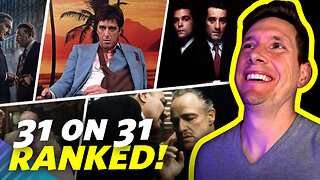 1:09:12
1:09:12
Adam Does Movies
1 day ago $0.52 earned31 On 31 - Law & Disorder Edition - Ranking 31 Mob Movies!
10.3K2 -
 LIVE
LIVE
SpartakusLIVE
3 hours agoNEW Easter Egg, SPECIALIST || Duos w/ @GloryJean followed by quads later!
107 watching -
 LIVE
LIVE
sophiesnazz
5 hours ago $2.57 earnedSEASON 4 UPDATE l PLAYING WI @spartakusLIVE !socials
631 watching -
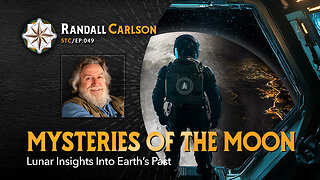 1:04:22
1:04:22
Squaring The Circle, A Randall Carlson Podcast
1 day ago#049 Mysteries Of The Moon: Lunar Insights - Squaring The Circle: A Randall Carlson Podcast
11.8K3 -
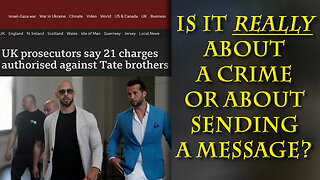 18:48
18:48
Odd Man Out
4 days agoNew charges? This is really starting to feel like nothing more than a smear campaign
16.5K54 -
![[LIVE] BIKINI FASHION MIAMI SWIM WEEK 2025 | Moxy by Fusion Fashion Events](https://1a-1791.com/video/fww1/d6/s8/1/_/_/_/O/___Oy.0kob-small-LIVE-BIKINI-FASHION-MIAMI-S.jpg) 1:46:53
1:46:53
SHIFT
1 day ago $1.10 earned[LIVE] BIKINI FASHION MIAMI SWIM WEEK 2025 | Moxy by Fusion Fashion Events
9.74K1 -
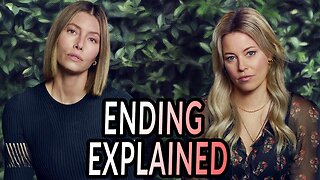 9:29
9:29
ThinkStory
1 day agoTHE BETTER SISTER Ending Explained!
7.14K -
 1:28:07
1:28:07
JasminLaine
1 day ago“It’s All a LIE”—Bitcoin Investor WARNS Carney’s Plan Will COLLAPSE Canada’s Economy
7.17K23